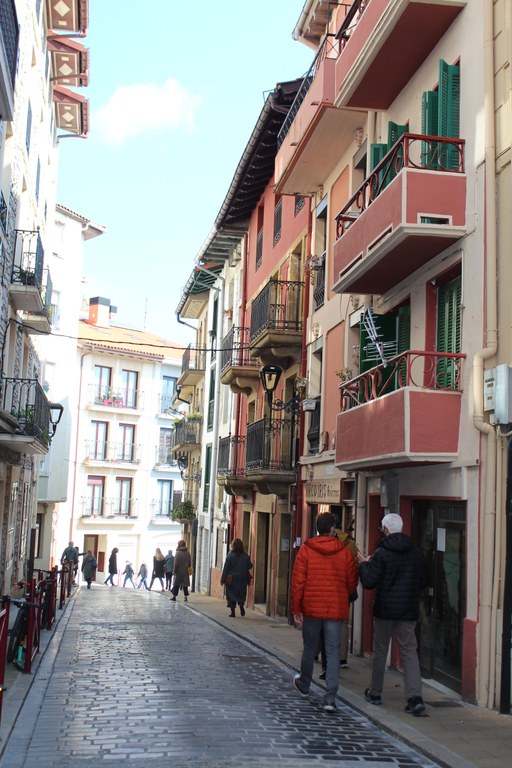The Charm of Zumaia's Historic Quarter
The Cantabrian Sea, its matchless coastline or its mild climate... one's reasons to visit Zumaia may be varied. Whatever yours might be, here you'll find a town rich in history and culture.
When you arrive in Zumaia, of course, don't just focus on the first thing you see, as it's worth exploring thoroughly. Taking a casual stroll, you'll come across numerous treasures and corners, and discover the real Zumaia: its history, its stories, its legacy, its art, and, above all, its people.
And, because it's a small town, it won't take you too long, and you can discover it on your own. To help you do so, you'll find numerous information panels, and each historic building includes a brief information panel on its main façade. And, if you need more help, you can stop by the Tourism Office and get a map of the Historic Quarter. The adventure is about to begin!
There are many noteworthy buildings dating from different eras, and features that you'll find along the way:
The Church of San Pedro harbors Gothic and Renaissance treasures that few people know about, including its rich and spectacular altarpiece of Antxieta, among others
The hermitages of Arritokieta and San Telmo, as well as the Palace of Foronda, besides being enchanting sites, boast interesting histories and offer some of the Zumaia's most beautiful views.
The Beobide Museum and Z Cultural Space allow patrons to learn all about two artists who were great friends: the sculptor Julio Beobide and the painter Ignacio Zuloaga. Meanwhile, the Algorri Interpretation Centre will help you understand the area's natural heritage.
The palaces of Zumaia, Ubillos and Olazabal constitute some of Zumaia's oldest and most elegant icons. These gems, built in different eras and styles, once formed the center of the town.
Beyond its buildings, Zumaia is also the right place for those who want to learn all about local traditions and history. Take advantage of that downtown walk to learn a bit about the importance of the town's industry and maritime heritage.
Despite being a coastal town where the scent of saltpeter fills the air, fishing has not been as important here as in other coastal towns. Rather, the engine of Zumaia's economy has been, mainly, industry, though some of its main industrial initiatives were linked to the sea during its industrialization process, such as shipbuilding and the manufacture of marine engines.
Geology has also had a lot to do with this. The features of the local land prompted the construction of several cement factories at the end of the 19th century. One of the best known, Cementos de Zumaya, led to a certain type of cement being called "Zumaya", which boosted shipbuilding and the motor industry, a heritage about which you'll find interesting information on a tour dotted with panels.
Zumaia's maritime heritage can also be appreciated here, as the legacy left by its fishermen and mariners runs deep. In fact, we boast the only machine for the sale of fish still preserved in the Basque Country. You can see it at the Cofradía (association) de San Telmo's center.
In order to publicize all this heritage, the ZIIZ Association and the City of Zumaia have installed information boards on the importance that different industrial activities have had in Zumaia. Look for them, and discover this heritage, as unknown as it is important.

 turismoa@zumaia.eus
turismoa@zumaia.eus
 Bulegoa
Bulegoa











